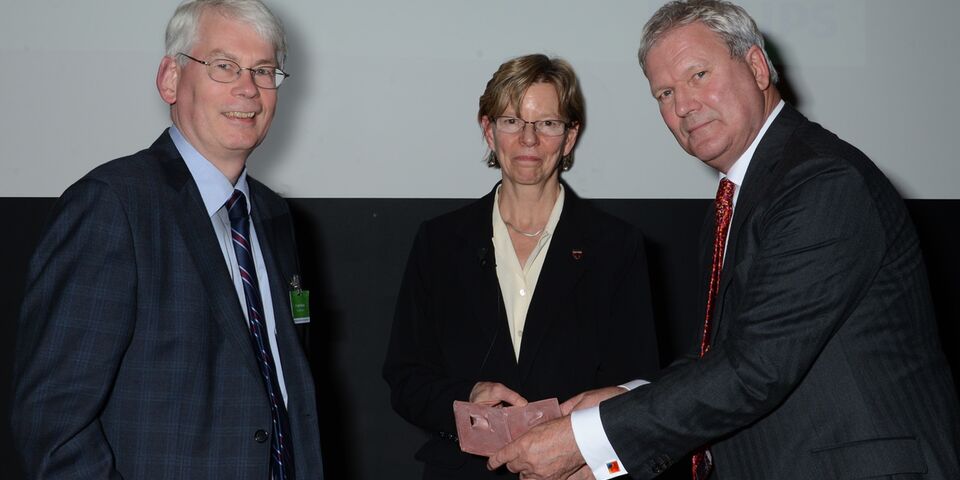TU/e and Harvard do same thing from different angle
“Basically, we’re doing the same thing, but we each approach our educational reforms from a different angle”, says Lex Lemmens, dean of the bachelor College. He came to said conclusion after a meeting with Cherry Murray, dean of the Harvard School of Engineering and Applied Sciences. Murray delivered the Holst Lecture last week, and invited Lemmens to visit her institute to get to know each other better.
Cherry Murray delivered the 37th Holst Lecture, in which she described the tumultuous developments at the Harvard School Engineering en Applied Sciences (SEAS). The institute gained independence from the Harvard School of Liberal Arts and Sciences only in 2007. According to Murray, until recently Harvard never really warmed up to the idea of ‘applied’. “But I’m dead sure a university that doesn’t invest in engineering won’t make it these days”, said Murray. She was made dean in 2009, after an impressive business career, including a position at Bell Laboratories. “Just look at the rankings. MIT, Stanford, and Caltech climbed up, whereas the University of Chicago dropped considerably.”
The SEAS educational model is very similar to that of the Bachelor College at TU/e, dean Lex Lemmens confirms. “The main difference is that SEAS originated from liberal arts (where students are required to take courses in disciplines that aren’t necessarily relevant to their majors, ed.), while we’ve introduced courses that stem from the field of engineering.”
Of course, there are differences, too. Harvard knows extremely strict entry requirements. Murray: “Which makes it harder for us to convince students it’s okay when something goes wrong. They’re just not used to that. Working together is usually a tough thing to get used to as well. Excellent students trust themselves, but others? Not so much." For Murray SEAS is a place that “doesn’t want to overload students with knowledge, but encourages them to think first.”
Lemmens was happy to hear that teacher coaches are important at SEAS. “That’s our goal, too. Both SEAS and we want to be able to measure the learning outcome properly. Professor Anthonie Meijers created a list of criteria, and Murray was very eager to learn more about that.
Murray invited Lemmens to visit her institute next year, so they can get to know each other’s approaches better, and exchange ideas.


Discussion